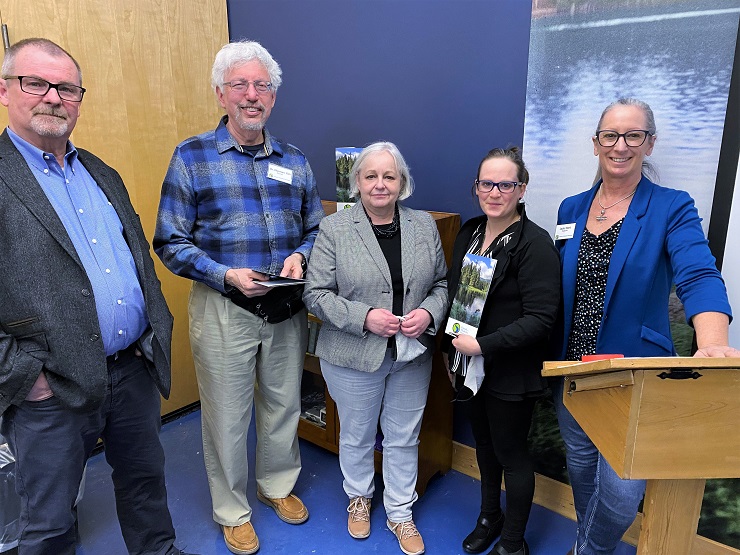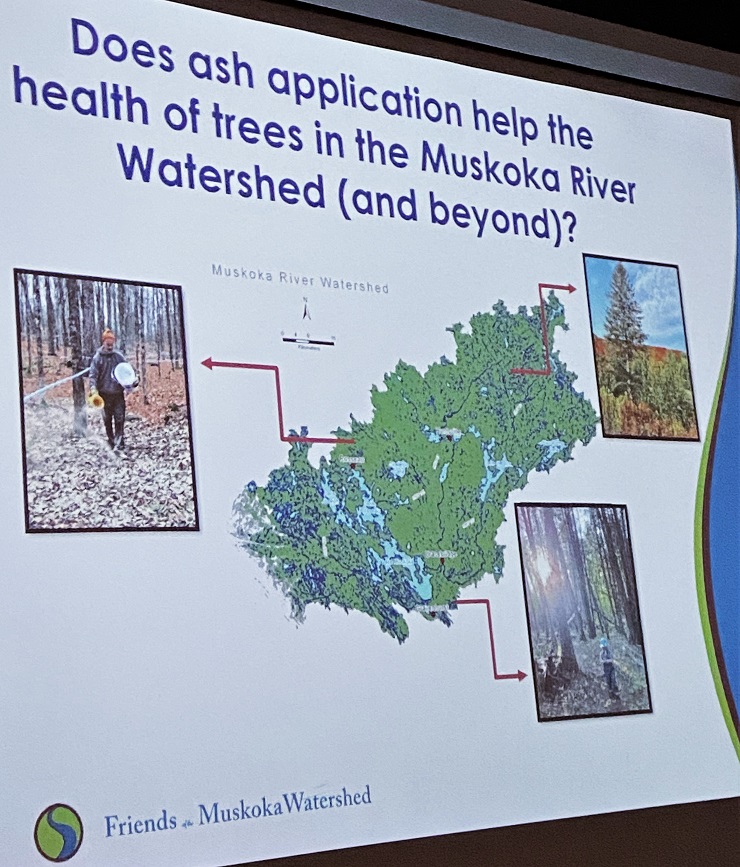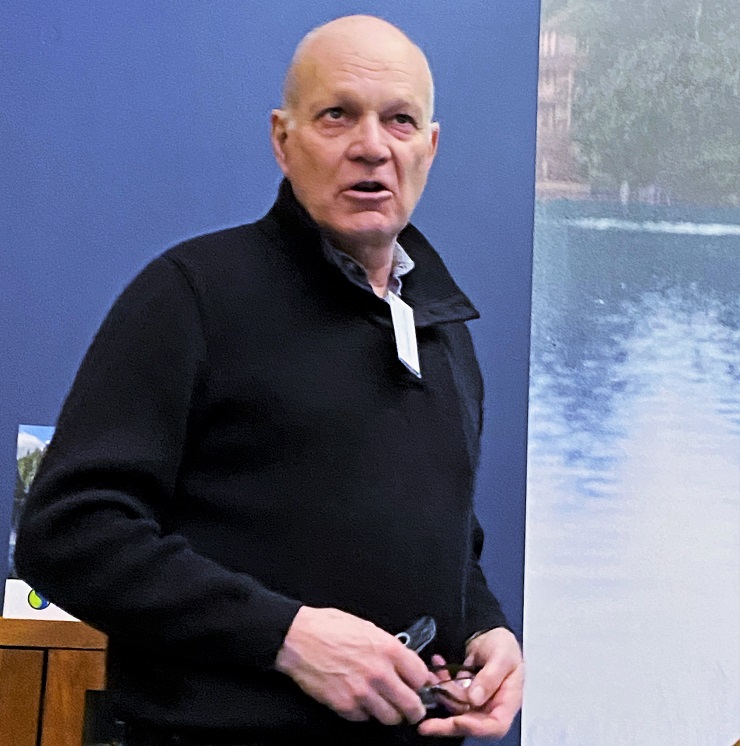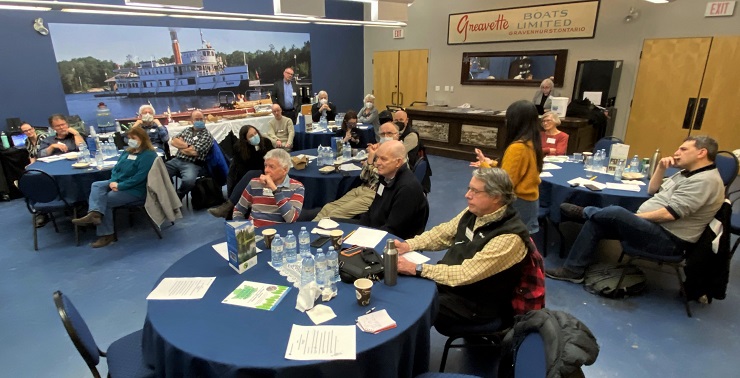FRIENDS OF MUSKOKA WATERSHED ENGAGE ‘CITIZEN SCIENTISTS’ TO STUDY FOREST IMPROVEMENTS USING WOOD ASH
Mark Clairmont | MuskokaTODAY.com
GRAVENHURST — Yesterday, as Ottawa unveiled ambitious national climate change goals, a group of local scientists and supporters took a micro approach to environmental concerns deeply affecting the district.
Friends of Muskoka Watershed (FMW), a highly-regarded — if lesser known — group of lake experts tackled as important issues affecting waters and forests and related environs.
While they we’re tackling global gas and oil emissions, the bases of Muskoka’s natural health was the focus of these considerable scientific minds.
The gathering of meta-minded thinkers at the Muskoka Discovery Centre — on the shore of Lake Muskoka — proved a cathartic exercise in planning and policy development.
One inspired by two university student presentations on its new signature ash program and an important update report by local scientist Dr. Neil Hutchinson on how tonnes of road salt are threatening Muskoka’s lakes, streams, water courses and tables.

It’s hardly new for the estimable environmentalists who have been studying the Muskoka effect on Mother Nature.
“People who drink from the same Kool-Aid,” said Tim Kearney, project director of the ash program, who chaired the meeting in the absence of Peter Kelley.
FMW — not to be confused with the Muskoka Watershed Council and its Watershed Report Card operated by the District of Muskoka — is a not-for-profit in existence since 2013 with more than 1,200 friends who have donated ash to spread on trees to study how it improves growth.
Kearney says “There’s an appetite to try and do something to save the environment.”
And FMW is doing its part in small ground level ways they passionately believe will yield big dividends.
Like their residential wood ash program, meant to restore calcium levels in forest soils and lakes — and that could expand tree growth and produce more maple sap.
Calcium is essential for all life growth; however central Ontario’s decline due to decades of acid rain mean it would take centuries for levels to return without help.
Researchers discovered residential wood ash — a common household waste derived from wood-burning fireplaces and wood-fired ovens — was rich with the nutrients needed for restoring growth, including about 30 per cent calcium.
Wood ash programs are widespread in Scandinavian countries.


So FMW has been encouraging public donations since 2019 before the pandemic. They have given out pails and collect the ash at the district’s Rosewarne landfill station in Bracebridge, where volunteers sift and clean it of hazardous material for use on tree ground cover for testing purposes.
Trent University students Petula Batool and Shelby Conquer reported Tuesday on their findings from the past two years in three maple tree sugar bush plots in Muskoka.
They showed promising graphs — as part of ongoing studies — that would appear to approve FMW’s hypothesis.
And in April FMW is excited to roll out a “citizen scientist” program.
More than 60 forest-friendly volunteers will spread ash around trees on their property, which will then seem monitored for girth growth and quality of the foliage among other measurements in a bid to prove their theory.
Each site participant will have a control group of trees to test along with the ones receiving the ash.
It’s “gonna be crazy,” says Kearney, who says they’d like to have more test hosts involved. But due the cost to FMW of providing 5 kg. pails of clean-tested ash per tree — and the analytical tests — their budget from grants is very limited.
Kearney says it’s a rigorous study that will hopefully be enough to convince governments local and provincially to follow-up with larger testing and a program to work it in to forest management in a bigger, more sustainable way.
Hutchinson would like to see the same result for salt.
The FMW director has been studying road use of salt in Muskoka for a few years to discover its important impacts.
Much of his study, he told members in his update, has been in Gravenhurst around the Muskoka Wharf on Lake Muskoka on the west side of town; and Jevins Lake on the east side south of Gull Lake where Hwy. 11 exits into the downtown.
He monitors 10 locations on both sides of highways and district roads along streams and water inlets.
His results, too, show startling increases in the affects of salt on the life cycles of plants and animals, which depend on clean, healthy water to survive.
Hutchison says it’s a growing problem that requires the immediate remedial attention of public and private salt spreaders to further preserve another Muskoka lifeblood along with forests.


EMAIL: news@muskokatoday.com
28 years of ‘Local Online Journalism’
Twitter: @muskokatoday, Facebook: mclairmont1
Leave comments at end of story
SUBSCRIBE for $25 by e-transferring to news@muskokatoday.com
Or go online to https://muskokatoday.com/subscriptions
